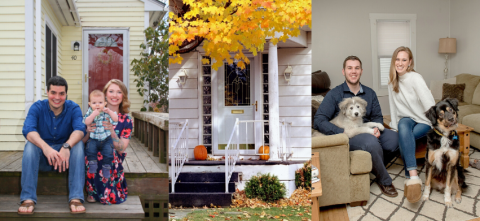
This commentary by VHFA Executive Director Maura Collins appeared recently in VTDigger
New estimates show fewer young Vermonters are buying homes. Vermont currently has the sixth highest homeownership rate in the nation, with 71 percent of households owning their home, but a downturn among young buyers could have lasting negative effects on Vermont’s economy.
According to 2017 Census Bureau estimates, Vermont’s homeownership rate among 25 to 34 year olds has fallen to 41 percent when it was 49 percent just a decade ago. The inability to find affordable housing during this stage of life can considerably delay purchasing a home, which delays these young Vermonters from committing to the state long term. A recent report from the Urban Institute found that young adults who lived with their parents between the ages of 25 and 34 were significantly less likely to be homeowners even 10 years later.
Homeownership is an important vehicle for households to build long-term wealth. Home equity is the largest component of household wealth, especially for Vermonters in the lower half of the wealth scale. In this way, homeownership is critical for retirement planning. Buying one’s first home later in life can make it challenging to pay off a mortgage before retirement when income typically falls. Deferred home purchases could have long-term economic consequences for Vermont if growing numbers of low and middle income elderly retirees lack the financial security provided by home ownership.
Homeownership builds long-term wealth in several ways. Homeownership still financially outperforms stocks and bonds. Despite recent tax law changes, homeowners also continue to receive significant tax benefits that renters do not have access to, allowing families to pass wealth to the next generation. People who become homeowners also tend to report higher levels of health, community involvement and sense of satisfaction with their lives than those who don’t.
Why are young households struggling to become homeowners? Vermonters generally have higher student and auto loan debt than most states, which can make it difficult to save enough to afford a down payment, and we know that Vermont has the 5th highest closing costs in the country. Vermont home prices have increased dramatically over the last two decades, while real wage growth for most households has been essentially stagnant. Inventories of affordable, decent quality homes are also low in many areas of the state, making buyers compete for scarce properties.
With Vermont 25 to 34 year old households growing at a rate of just 0.1 percent per year, many policy makers have expressed concern over the prospect of young people leaving the state for other opportunities. Having adequate housing options can both help employers attract and retain workers. Owning a home makes households far less likely to move, helping to keep them closely tied to their communities and in the state long-term.
Housing impacts almost every part of our lives. A lack of affordable homeownership opportunities is already reshaping Vermont’s economy. Vermont’s future will depend on how we respond.
